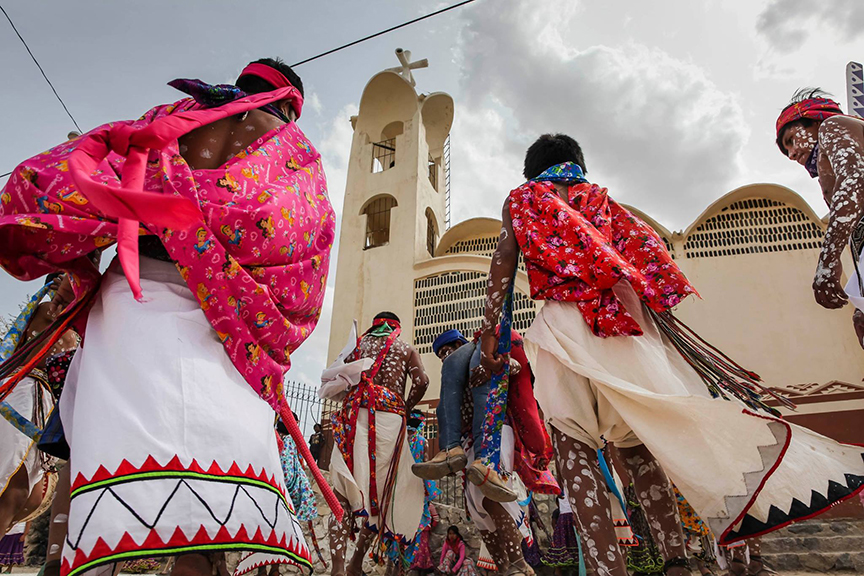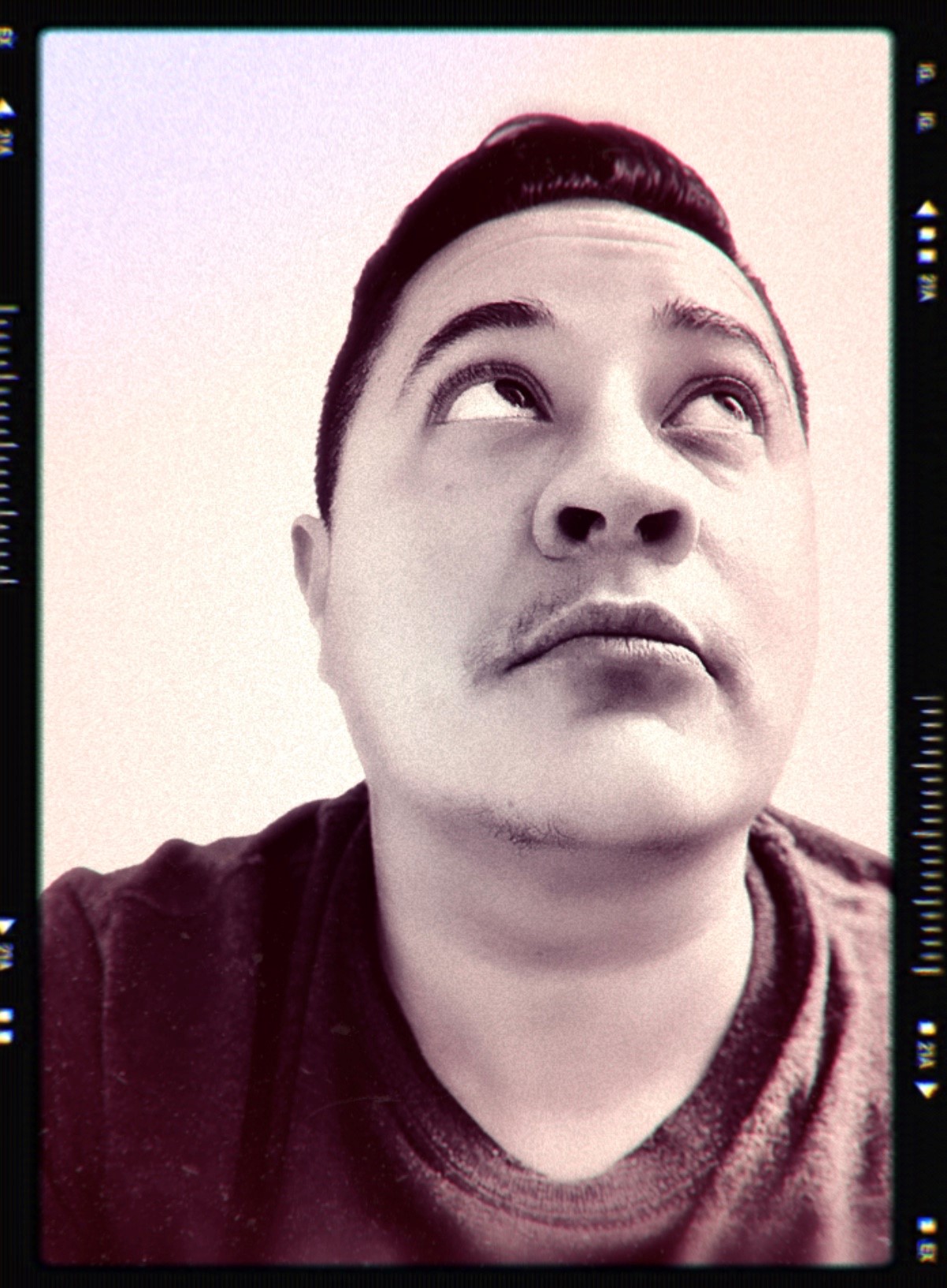Thesis work raises questions and hopes to provide answers about Mulaka story-mapping
In late November, Rafa Gonzalez, a second-year geography masters student, sat in front of a Zoom panel of about a dozen or more at the Southwest Regional Division AAG Annual Meeting 2020 and discussed his yet unfinished thesis work on the video game Mulaka, which is based on Mexican mythology and the rich indigenous culture of the Tarahumara peoples of Chihuahua Mexico.
He participated in one of two sessions, with eight virtual presenters total, in the film/media paper panel, designed for researchers and academics in Arkansas, Louisiana, New Mexico, Oklahoma and Texas. He chose the Southwest AAG, due to the interest in the Tarahumara culture in people from that region. His presentation was titled “Exploring the Use of Story Map in Mulaka,” and it generated a lot of interest and questions from other participants.
The Tarahumaras, who are known for their amazing running abilities, are facing a lot of issues today: wealth disparity, racism, land encroachments, climate change, food shortages, Cartel violence, children losing their culture by being “Mexicanized,” and so on, says Gonzalez. “They are proud people, but in the cities are the poorest people,” he says. “That’s my personal opinion. I saw it as a kid. I’ve been there quite a bit.”
According to Xbox, Nintendo and others, the “3D action adventure game … embark(s) on the journey of Sukurὐame – A Tarahumara shaman.” The goal of the game is to fight evil corrupting their home lands “while drawing on the power of demigods.”
It is made in a studio in Mexico with collaboration from Tarahumara leaders and anthropologists. It was created by Edgar Serrano, co-founder/director of his company Lienzo and the first Mexican studio to have its game on the three major consoles with a global reach.
And while Gonzalez enjoys playing the game, that is not the purpose nor intent of his thesis, which is an academic journal. “(My) article explores the use of story maps … that uses an artist style map that helps players navigate Tarahumara landscapes. Each location within the story map will be examined to understand the connections between the landscapes and the Tarahumaras,” he wrote as part of his abstract.
He says he will use the Rhizome concept – a research method that helps question hierarchy and binaries, providing a way to see how everything can be multiple and interrelated. It will allow him to study the multiple connections and themes of the map and the game’s landscape to discover if the designer’s mapping practice actually produces an indigenous map. He does this by exploring four concepts:
- Understanding the game development process
- Understanding the Tarahumaras' mapping traditions
- Understanding how the game designers translate them
- Understanding the relation between game designers and the Tarahumara
While he has formative answers, he says his research is not yet complete, and therefore he hesitates to present a conclusion just yet. Additional research includes interviewing game developers and possibly the Tarahumara peoples.
“I am looking at the story map, exploring each landscape, and connecting it to the Tarahumaras,” Gonzalez explains. “I’m analyzing the map itself and then all of the connections of the landscape to the map.”
There are virtual hidden artifacts embedded in the game like wooden relics, games, and jikuli (peyote) that the players can find and learn more about the culture. For example: The Tarahumaras would travel to the deserts to collect the jikuli plant and use it to speak directly to the Gods. “Aesthetically, it’s very nice,” Gonzalez adds.
“This history of indigenous characters in video games in the past was negative stereotypes or secondary characters,” Gonzales says. “Today it’s more positive, but most are Indie games. Mulaka is somewhere in the middle. The Tarahumaras did not give permission (for the design), but they worked with anthropologists, one who spent 20-plus years researching and living with the Tarahumaras. (Design) was more left up to the interpretations of the developers.” A portion of game proceeds is given back to the Tarahumaras, adds Gonzalez.
Gonzalez is working with advisor Mark Palmer and committee members Soren Larsen (geography department chair) and Dennis Kelley, (professor in religious studies), on the project. While nervous in the presentation, Gonzalez says he thought it went better than expected. “It’s good practice for when I defend the project,” he says.
“I think the one thing that I really enjoyed, is that it really did reinforce my faith in the research. There was a lot of interest from the other professors. And the host …. She said that it was a really interesting project, and that it showed other ways to view the world outside of Esri.”
“I think the one thing that I really enjoyed, is that it really did reinforce my faith in the research,” he says. “There was a lot of interest from the other professors. And the host …. She said that it was a really interesting project, and that it showed other ways to view the world outside of Esri.”
He says there were a lot of paths he could have taken to examine the video game, but he selected this one based on early findings. “I’m really happy I did the presentations because I had a lot of positive reinforcements that the research is valid and it is worth exploring.”
The game is available through Xbox, PlayStation and Switch, and shows a time period before the Spanish arrived in the 1500s, claiming Mexico and all its riches for Spain and converting (or trying) native peoples to Catholicism. Since that time, the Tarahumaras retreated away from areas the Spanish had conquered, including their tribal lands, and have since tried to hold on to their traditional ways.
“Some of the questions asked were very important things to consider: Especially looking at it from an educational standpoint,” Gonzalez adds. “But since I’m not really taking that direction, per se, the most important question to ask is the process and the way the game was made, and the map, and can it be considered indigenous mapping. That’s the main question.”

